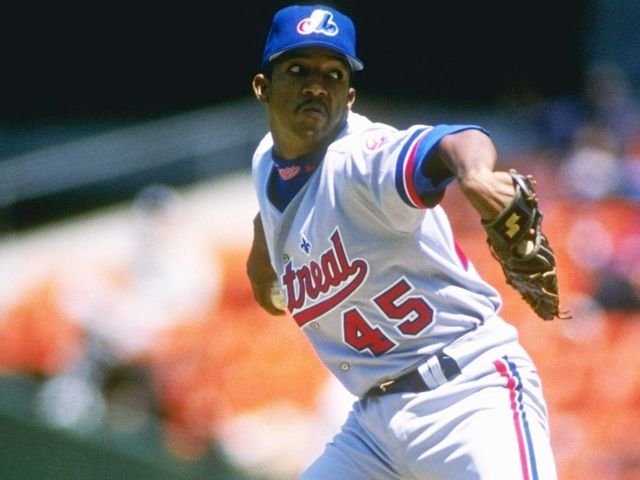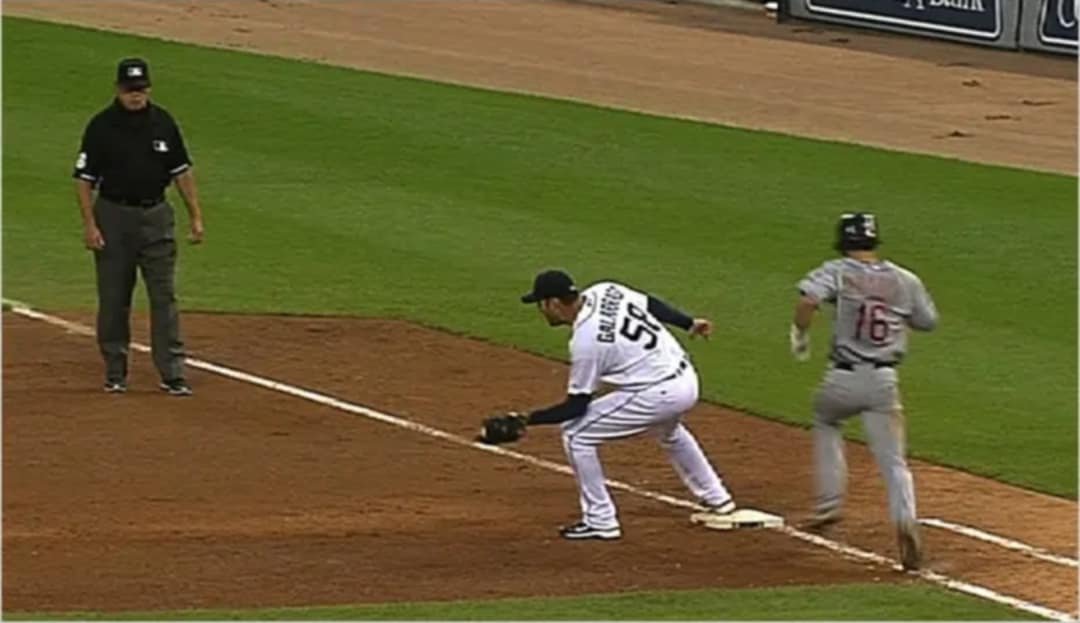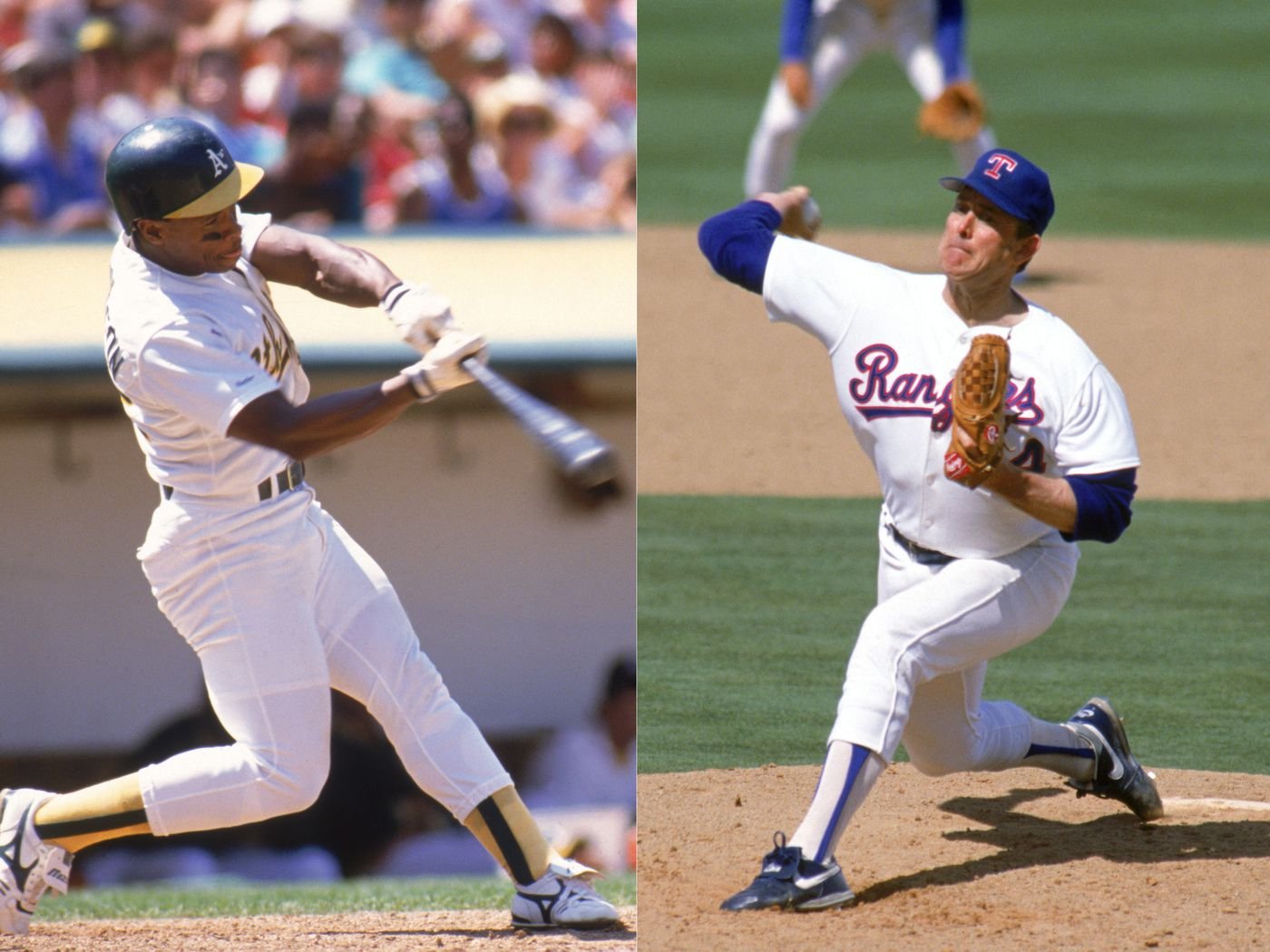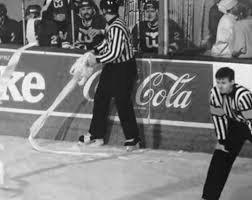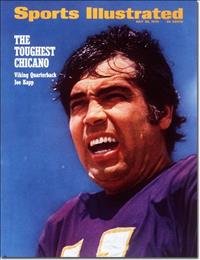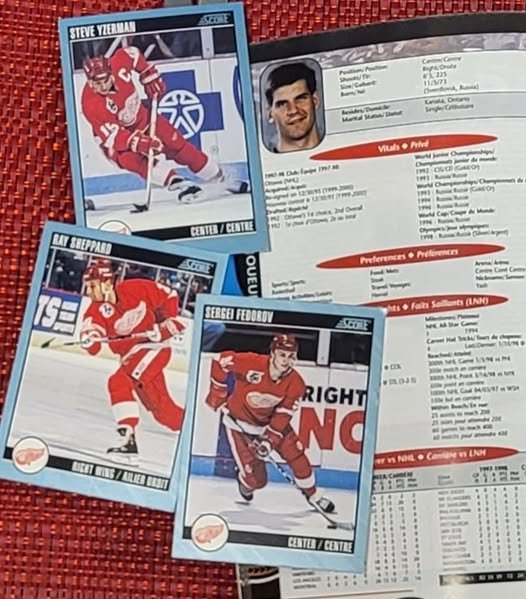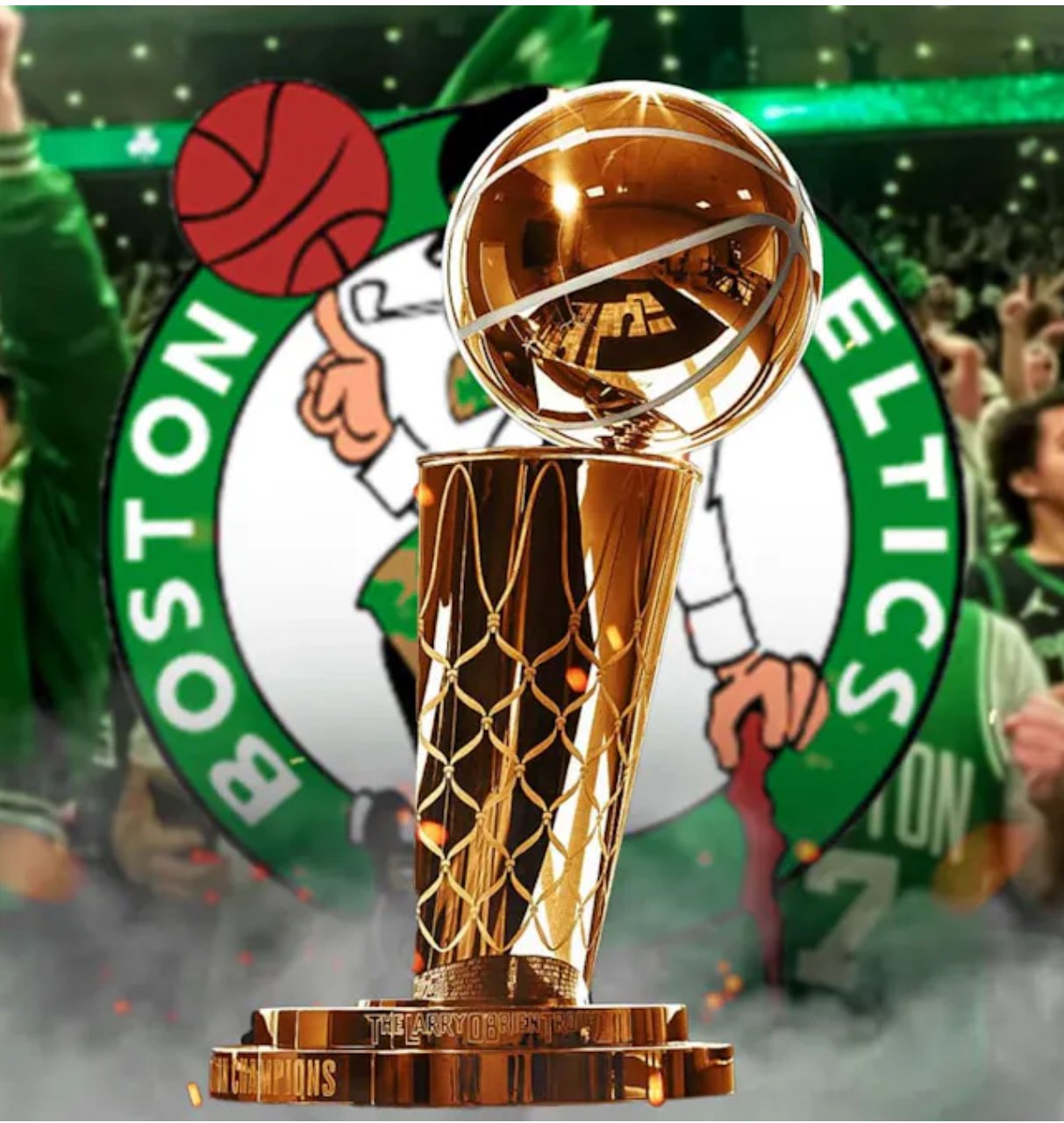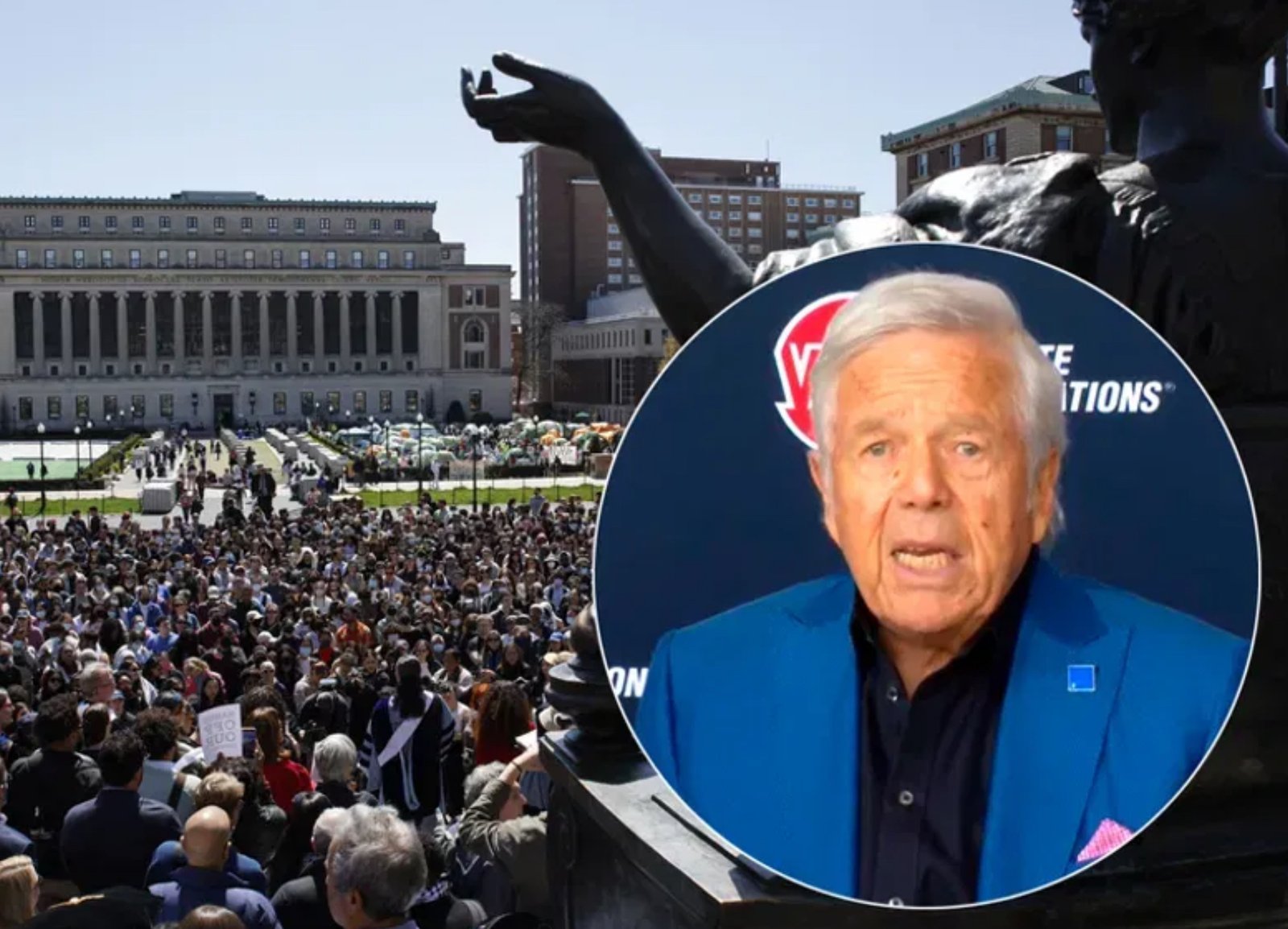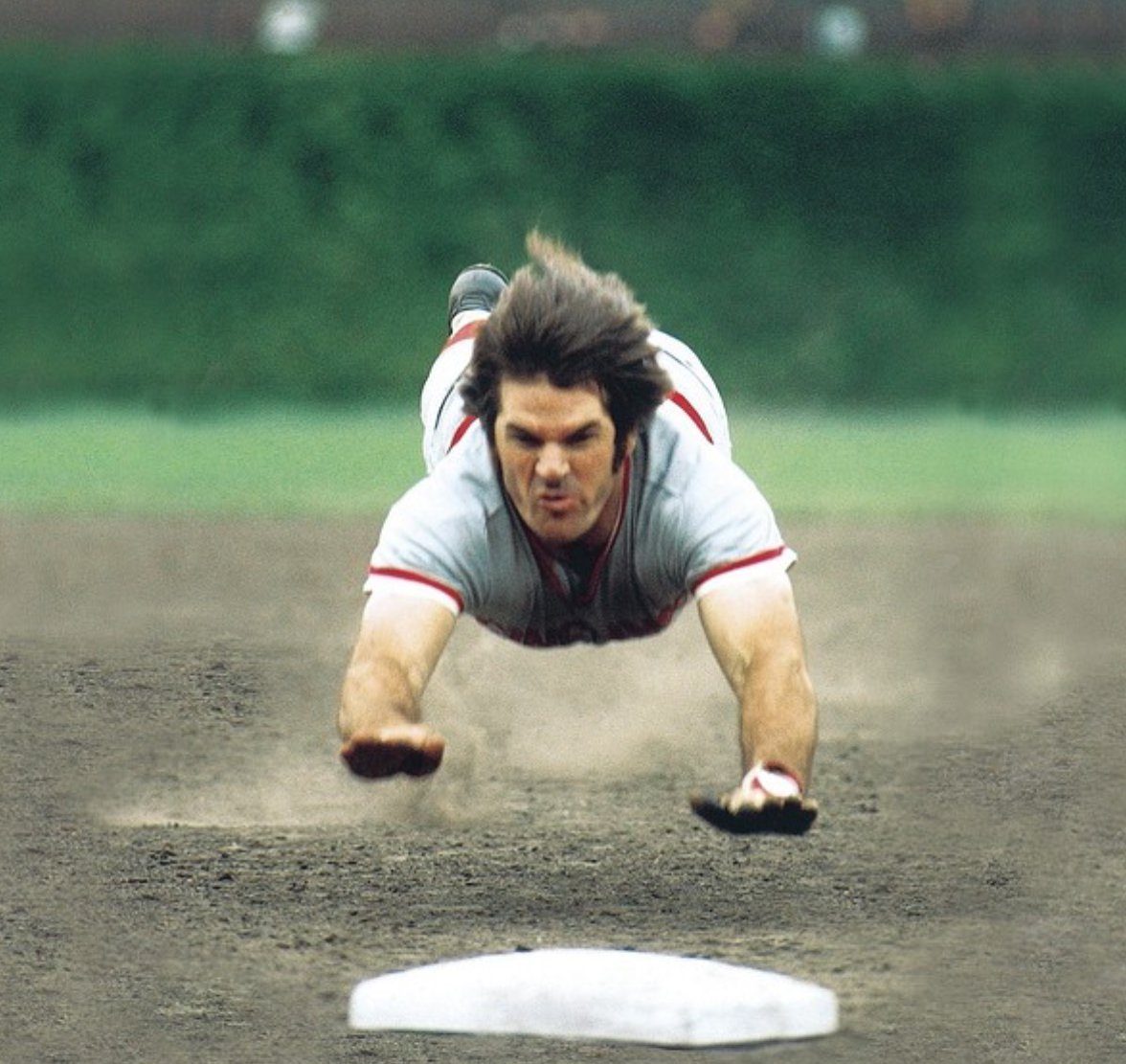Back in the old days, there was a television show that finished its airtime with the line “There are eight million stories in The Naked City. This has been one of them.” It’s true, folks. There really are eight million stories every day. There are happy stories and sad stories. There are stories or redemption and stories of failure. Stories of victory and stories of loss.
This is a football story. But it is more a story of a group of guys – Canadian guys – who set out to play a game that they loved. They played the game against Americans. Not for money and not for glory, but for each other and themselves. And for their love of the game. And along the way, they shattered some of the perceptions about how Canadians played football, especially how they played the game against their American opponents.
When you look at the sheer numbers, there were millions of kids, between the ages of 13-17, playing the game of football in the United States this past season. In all the levels of college football there are over 83,000 players. But when it gets to the National Football League, there are 1,696 roster spots for players at the highest level of the sport.
Making it to the NFL is one of the hardest things to accomplish for any football player. That leaves thousands of players who still have something left to give to the game. And that is where ‘semi-professional’ football comes into the equation. In 1988, the number of ‘semi-professional’ football teams in the United States was over 300. And that meant plenty of places for people who wanted to continue to play the game they loved.
(I should have added ‘without being paid for it’ to that last sentence.)
The oldest semi-professional team in North America is the Watertown Red & Black of the Empire Football League and they can trace their roots back to 1896. They have the most wins, losses, ties and games played of any ‘semi-professional’ team on the continent. Back in 1987, though, there was some Canadian content on that Watertown team.
(Just to note, the football team is a cultural icon in Watertown and the North Country. Half of the team generally comes from nearby Fort Drum, a military base in upstate New York. In 2012, the group ‘Traditional Arts in Upstate New York’ (TAUNY) awarded the Red & Black with their North Country Heritage Award. The team has its own showcase in the Pro Football Hall of Fame.)
By day, Mike White, a former Sir Robert Borden High School football player, Waterloo University grad and Ottawa Rough Riders draft pick, was a financial advisor with Davidson Partners, an investment company. On weekends in 1987, though, White was the head coach of the Red & Black. Jeff Morris had been a place kicker for the Carleton University Ravens. By 1987, Morris was kicking for Watertown.
Also playing for the upstate New York team were future Bootleggers Jamie Straw, an Empire League All-Star wide receiver and former Ottawa Sooner, former Carleton Ravens’ running back Clark Oliver, former Raven and Hamilton Tiger-Cat linebacker and lineman Lance Thompson and former Ravens’ basketball player turned defensive end, Andy Waterman.
One night in 1987, over post-game beers in an Ogdensburg, N.Y. bar, White and Morris began putting a plan together to form their own Empire League team. The name of the bar in which they were enjoying those beers just happened to be ‘Bootleggers’. That would become the name of their new team. Originally, though, the two men wanted to call the team the St. Lawrence Bootleggers and play their games in Ogdensburg.
They failed to find any suitable venue in Ogdensburg though and the team was subsequently moved to Ottawa’s Lansdowne Park. There are some who speculate that White and Morris never planned to play in Ogdensburg at all, but that by placing the franchise there to begin with, it gave them a better ‘in’ with the league than if their original plan was for Ottawa.
Their team would begin play in Canada’s Capital in the 1988 season and that meant that White and Morris had to find players. It turned out that with two universities, Ottawa and Carleton, and with a very renowned junior football (under 23) program in the Ottawa Sooners, the city was well stocked with football players of reasonable quality who might be available to the team.
The team White and Morris assembled was not half-bad. There was quality at every position on both sides of the ball. At quarterback, there was former Raven Cam Collins and former University of Alberta Golden Bear Jaimie Crawford. Later in 1988, former Raven Paolo Hollands would join the team as well as would former Ottawa U. Gee Gee, Rick Zmich.
At running back, much of the work would be done by the former Raven, Oliver, and then-high school star Dean Noel. Noel would go on to play five years in the CFL with Ottawa and Hamilton. But he would use his success with the Bootleggers to secure a scholarship at Delaware State University before setting a course for pro ball. The team also would use brothers Steve and Dave Powell at fullback. Steve Powell had been a Fisher Park High School star whose number was retired there.
At wide receiver was the EFL All-Star and former Sooner, Straw. Alongside him was former Bishop’s University grad and Montreal Concordes’ draftee Steve Lalonde. Joining them as inside receivers and tight ends were former McGill Redman and Hamilton Ti-Cat draft pick Glenn Miller, Gord Hudson, Chris Stocks, Danny Massie, Brad Davis, Mike Moffatt and Pat Milks.
Also, partway through the season, former Calgary Stampeder wide receiver, and 1984 Vanier Cup champion when he played at the University of Guelph, Parri Ceci (father of NHL defenseman Cody) joined the Bootleggers.
Their offensive line was strong. Former Sooners Andy Malguzzi and Jim Brunton were the tackles. Former Ottawa U. standouts Warner Miles and Dave Upton were the guards. Ron Wilson played at both Carleton and Ottawa Universities and he was the centre. Later in the 1988 season, former Bishop’s Gaiter, Tim Saunders, son of former Rough Rider, Alex, joined the team and played centre and long snapper.
Miles was an interesting hometown story. He played high school ball at Glebe Collegiate where he was an All-Star and then played four years at Ottawa University with the Gee Gees. He was drafted by the Toronto Argonauts. He played two seasons there before going to Vancouver to play with the B.C. Lions under coach Don Matthews in 1983.
He split the 1984 season between the Ti-Cats and the Ottawa Rough Riders. After that, he began to go to work in his field of study — geology. Miles shared some time with me for this article and he told me, “I wanted to be a geologist almost as long as I wanted to play in the CFL”. When he was drafted, he had to make a choice. Knowing he might never have the chance to play pro football later in his life, he joined the Argos.
But, as a Canadian in the CFL, the money is not the greatest, especially if the player isn’t a regular starter. In Toronto, Miles was not that. When he went out to the west coast and joined the Lions with Matthews as his coach, he became a starter. “Don made football fun,” Miles told me. But the year with Hamilton and Ottawa and the reality of financial decisions told him which way to go. In 1985, he became a full-time geologist. Football would call him back a little later though.
Miles explained how he came to join the Bootleggers. “I met Mike (White) at a gym. Sparks Street Fitness. Anyway, he told me about this team he was starting. Lots of old friends like Ron Wilson and Dave Upton were going to play. I’d just finished my undergrad degree and was ready for some fun. I had lots of football left (in me). Honestly, it was like redemption and I jumped at it. Best decision ever.” That offensive line would stay pretty much intact for the three seasons the team existed.
On defense, in 1988, the Bootleggers would go mostly with a three-man line. Lance Thompson and Dave Weatherall played the ends with Steve McHugh at the nose. McHugh and Weatherall were former Sooners. When they went with a four-man configuration, Andy Waterman would come in.
The linebacking corps was the strongest part of the team. Rod Moors was the Bootleggers’ quarterback in 1989 and when I spoke to him for this piece, he described that group as “lethal”. The best known of the bunch was Shane Ireland. The former Sooner was the Defensive Player of the Year in junior football in the entire country in 1982 and 1983. He went on to play four seasons for Ottawa and Montreal in the CFL.
Tim McGowan and Mike Morris were both former Sooners as well. Paul Brown was a smiling school teacher by day, but the former Simon Fraser University product would put a scowl on his face on game days. Former Sooners Allan Guzzo and Jimmy Fata were the other linebackers that played that season.
In the defensive backfield, there was a large group that rotated in and out. On the corners were former Ottawa Gee Gees grad, Tim Yee, ex-Sooner Andrew Ferguson and from the University of Toronto, Sean Marsden. The safeties were Scott Spurgeon who had played at St. Francis Xavier University, former Sooner and Gee Gee, Danny Post, former Sooner and Raven, Pat “Paddy” York, former Gee Gee, Dickie Blais, ex-Sooners Jimmy Lianos and Rich Lapointe. Another former Sooner, Adrian Blackett, joined the team later in the season.
Glenn Miller handled the place kicking duties while Jeff Morris, the team’s general manager did the punting. Spurgeon and Miles were the old men of the team. Miles was 29 years old and Spurgeon was in his early 30s. Miles, in his 2018 book, Ottawa Bootleggers – Real Men Wore Black, noted that the two men were in fact older than their coach, White and their general manager, Morris.
The first task for this motley crew was to meld into a cohesive unit, to become a team. The second was to try to figure out how well they could actually play. Miles notes in his book that at every level of football, there are certain things come to be known as ‘standard’. Pre-practice chalk talks, medical staffs of certified trainers overseeing practice, standard football fields with goal posts.
Bootlegger practices didn’t seem to have any of these things. “The Bootlegger physical exam was the ability to play with a hangover, which would come in handy,“ Miles joked. Bob Stephen was the offensive line coach and was excellent at teaching footwork and technique. But, as a coach, his greatest contribution, according to Miles was, “to have 24 cold ones on ice in the trunk of his car at the end of every practice. A man after my own heart.”
Before the team would even play a game, there were obstacles. The CFL’s Rough Riders were not thrilled that another tenant was playing games at Lansdowne Park and tried to place hurdles in front of the new kids before they even got out of the starting blocks. They tried unsuccessfully to prevent the Bootleggers from using the scoreboard. They did manage to have attendance limited to whoever could sit in the North Side stands. The South Side seats would not be used.
It’s important to look at the environment that the new team would be walking into. The Rough Riders had been struggling for a while. In 1987, Ottawa’s CFL team went 3-15. In the 1980s, up to this point, their only .500 season had been 1983. They went 8-8. Yes they went to the Grey Cup in 1981 but their record that year was 5-11. From 1980 to 1987, their cumulative regular season record had been 42-89-1.
Ottawa has always loved its football but by the spring and summer of 1988, the fans had become jaded, which is a polite way of saying ‘fed up’. And the Riders’ management, at the time, were fearing for their financial existence. These young interlopers weren’t doing anything to ease the Rough Riders’ collective anxiety.
The Bootleggers’ first game was coming up against the Hudson (N. Y.) Vikings at Lansdowne Park. The field was obviously set up for the Canadian game with a 110-yard playing surface. The narrower American field had to be created with duct tape. One of the goalposts was removed and replaced with PVC uprights that would be brought in as needed. The existing 5-yard-lines were turned into the goal lines and the end zones, instead of ten yards deep, would become five yards deep.
Hudson is about two hours north of Manhattan and just south of Albany. Before the Vikings came north of the border, a reporter from Hudson called Mike White for an interview. White related the call to Warner Miles for his 2018 book. According to White, it went like this:
“Before our game against Hudson, New York, an American reporter phones to ask about our team. He’s really patronizing, like ‘Who are you hicks, anyway, daring to play in an American league?’ So I played right along. Our offensive line, you ask? They average 200 pounds, really huge. How experienced is our quarterback? Let’s see…he did play one game of touch football. Our back-up quarterback? Oh, he can’t play…he found out yesterday his girlfriend’s pregnant and he’s getting married this weekend. Are we ready, did you say? I’m not sure, six players quit yesterday because they couldn’t take the discipline. By the way, this is really neat; I’ve never been interviewed by a reporter before.”
It’s not known whether the reporter relayed the contents of that call to the Vikings, but whether he did or not, the Bootleggers didn’t care. Their defense completely stymied Hudson’s offense. Ottawa blanked the Vikings 39-0. Miles, in his book, described how he and his former Ottawa Gee Gees’ teammate and centre Ron Wilson reunited and performed together once again.
“Ronny Wilson and I played beside each other for the first time in eight years. He had been a 180-pound rookie at the U of O back in 1980, but was now 275 pounds with five seasons of college ball under his belt. We’d chip, slip and scoop the defensive tackle up to the linebacker and were crushing both. After three quarters of hammering this poor guy, he gave up saying ‘This shit is too hard’. The next play, a guy wearing number 24 replaced him. A receiver, I guess.”
Ottawa had four rushing touchdowns and Cam Collins threw for a couple more. The Vikings total offence was a negative number of yards. The only bad spot for the Bootleggers was the fact that they had amassed more than 200 yards in penalties. That was something that would become the theme for the team as they went forward. But for now, it was time to enjoy a couple of post-game frosty beverages.
I can remember how, in Ottawa, this game and the result reverberated through the sports community and generated a great amount of buzz in town. At my work, there were a bunch of us who were football fans and we got a group together to go to the Bootleggers’ second game. And really, why would anyone not go to a game?
Tickets were $5. The atmosphere at the games was very casual. There was a Brewers’ Retail (beer store) across the street from the stadium and, if you wanted, you could pick up a six pack and bring it into the game. You could stop off at Fat Albert’s and grab a sub or over at Cicero’s, you could get a pizza, and you could bring those into the park too.
You and your friends could set up a little area in the North stands for yourselves and it was like watching from the comfort of your living room. Except YOU WERE THERE! It was one of the most unique fan experiences I’ve ever been a part of and it was so wonderful! The sad thing is that it’s doubtful that it could ever be replicated.
One of the things you have to remember about the Bootleggers is that Mike White and Jeff Morris did everything. Right down to the lineup sheets. There were no programs, but you could get yourself a lineup sheet and figure out who the players were if you didn’t already know who they were.
The team’s second game was against a very good team. The Harrisburg Patriots weren’t in the Empire League. This was an exhibition but it would be a very good litmus test for the young Ottawa team. In the summer of 1988, Harrisburg was ranked third nationally and had lost the Continental League championship game in overtime in 1987.
As we sat in the crowd of about 3,000 fans watching this game, I couldn’t help but chuckle at the sense of humour of whomever had written the player descriptions and where the individual players had come from before playing for the Bootleggers.
Apparently, receiver Jamie Straw had attended ‘Texaco Tech’. In reality, he was a licensed auto mechanic. Safety Pat ‘Paddy’ York was “notorious for smuggling beer on road trips”. His day job was as a Brewers’ Retail employee. Safety Danny Post, according to the lineup sheet, “is a team player. Regardless of what team you’re on, he’ll hit you”. Everything was done tongue-in-cheek.
The Patriots offered a lot more of a challenge to the upstart Bootleggers that the Hudson Vikings had the week before. Both defenses were very strong. Ottawa limited the Patriots’ offense to just 68 net yards. But Ottawa’s offense managed just 98 yards. The game ended in a 6-6 tie. It was a nerve-wracking game to watch, but that’s what made it exciting.
The Boots’ linebackers in particular and their defense as a whole stood very tall and because of the result, the team felt they deserved a top ten ranking nationally. Defensive co-ordinator Ian Hoyte was quoted in a Rick Mayoh article in the Ottawa Citizen talking about the way their American opponents had discounted them to this point in the season.
“These Americans just don’t take us seriously. We play with a lot of heart. We hit through the whistle. Everybody gang tackles.” They’d given up six points in two games and were just beginning to learn how good they could be. The Bootleggers had the right to feel good about themselves and football fans in the nation’s capital were taking notice.
Their next game would be a big test though. They were facing the Scranton Eagles. The Eagles were the defending Empire League champions and they had rolled through their first two opponents by a cumulative count of 73-14. 3,000 fans would be at Lansdowne Park to witness this game.
The home team was up 9-0 at halftime thanks to a spectacular 93-yard pass-and-run from Cam Collins to Jamie Straw and a Lance Thompson safety after the Bootleggers blocked a punt. But that good feeling would be short-lived. Scranton scored 38 points in the second half and left town with a 38-16 victory.
Yes, the score may have looked somewhat bad, but there were plenty of positives the team was able to take from the game. It was just their third game together and Eagles’ coach ‘Butch’ Keller told the Ottawa Citizen’s Rick Mayoh afterward, “They’re going to be a force to be reckoned with”.
That was the last Bootleggers’ home game for a while. They had five straight road games after this. Miles relates the routine for the team before every road trip in his book. “After work, on the day before a game, we met in the parking lot of Carlingwood Mall in the city’s west end. Wives and girlfriends would kiss us goodbye and we’d climb aboard a Voyageur bus piloted by our faithful driver, Roy.”
“The studious, more serious types would sit in the front of the bus and the Sooner boys were in the back with Coach Bobby (Stephen). He provided an educational service to the boys using a deck of cards. It was always noted how far we got out of town before one of our young linemen lost all his money. I believe the record was Nepean.”
The team would be heading to Watertown, Binghamton, Schenectady, Johnstown (all in New York) and Scranton (Pa.) over the last three weekends in August and the first two in September.
The Bootleggers racked up 300 yards in penalties against the Red & Black in Watertown but they beat their opponents and the referees by a score of 21-7. In the Ottawa Citizen, Jeff Morris commented about the officiating. “There are homers and there are homers. I’ve never heard of a team getting 300 yards in penalties. It’s probably a world record.”
The following Saturday, the boys were in Binghamton. The park there was…..a park. Miles, in his book describes it as “a cow pasture”. There were no stands. Besides there being seats missing, the Bootleggers were missing four of their defensive mainstays. Heading into the fourth quarter, Ottawa led 10-7.
But then, Cam Collins hit Dean Noel on a 65-yard touchdown toss. After that, Collins connected with Straw for a 15-yard major. Paolo Hollands then went in at quarterback and he fired a touchdown pass to Brian Bynoe to wrap up the scoring. Ottawa came out of that game with a 31-7 victory.
So the team now had a record of 4-1-1 and their loss had come to the mighty Scranton Eagles. The American Minor Professional Football Association came out with their national rankings and, lo and behold, the Ottawa Bootleggers were showing up at Number 6! In an August 24 Ottawa Citizen story, Jeff Morris told Rick Mayoh, “We’re pretty thrilled about it.” Indeed the team should have been happy. But, first things first. On to Schenectady!
The game there was scoreless after the first quarter, but an interception return for a touchdown by Dave Weatherall and a Cam Collins pass to Steve Lalonde, who took the ball to the house, had Ottawa up 14-0 by the half. In the second half, the Bootleggers had the ball inside the Chargers 10-yard-line on four possessions but garnered zero points from them.
Meanwhile, the home side took advantage by getting one touchdown and then moving the ball down the field as the clock was running down. On the last play of the game, Ottawa stopped Schenectady on the one-yard line. But the officials called a penalty on the visitors and gave the Chargers another opportunity. They pushed the ball into the end zone and needed the conversion to tie the game. But Shane Ireland blocked the extra point attempt and the Boots pulled out a 14-13 win.
When Miles was writing his book, linebacker Brent Cherkas told him a story about one of the Chargers’ players who had been ejected during the game. He was quite angry at everyone for his expulsion. Before he left the field though, he told the Bootleggers who were within earshot that he had a gun in his car and he was going to shoot them all in the parking lot after the game!
Miles had no memory of that happening but when he asked Mike White about it, White told him, “Yeah. That sounds about right.”
The team’s next two games were at Johnstown against the Colonials and then at Scranton to play the Eagles. The Bootleggers made some crucial mistakes against the Colonials and despite having a great running game, lost 21-10. The next week, in front of 14,000 fans in Scranton, the home side ran up the score against a tired group of Canadians. The final score was 41-17.
Road games on buses are grueling enough. The rides back when you lose are awful. After the game in Scranton though, the home team invited the guests to a golf course for drinks. After the social pleasantries were done, the Bootleggers boarded the bus to make the long trip home. White counted the heads to make sure they had everyone and the bus took off. But one player seemed to be missing.
“A few guys were asking if anyone had seen one of our defensive backs,” Miles wrote in his book. “Someone had seen him heading toward the 18th green with a young lady. As we rolled down the highway, I looked out the window to see the defensive back running alongside the bus, punching it as he ran. The bus finally stopped to let him on. He wasn’t happy about being abandoned and he let Mike know about it all the way back to Ottawa.”
The team went 3-2 on their road swing. Not terrible, but for the Bootleggers, they knew they should have been better at least against the Colonials in Johnstown. They would play two more regular season contests before any talk of playoff games could take place. Those games would both be played at Lansdowne Park and hopefully, the home cooking would benefit them moving forward.
One thing that would surely benefit them was the acquisition of quarterback Rick Zmich, the former Ottawa University standout. His first game for the team would be against Binghamton. It was a rainy September Saturday and only 1,200 fans showed up at Lansdowne, or as it had been renamed “Death Valley”.
The team had a new mascot as well. He dressed up in a black cloak and had a skeleton mask and did gymnastic flips and did his best to get the crowd going. His name? The Grim Reaper.
It was an ugly weather day and that made passing tough. But the Bootleggers put up 31 points in an easy 31-0 victory. It was their defense, and their linebackers in particular, who set the standard. They held Binghamton to just 14 yards of offense and kept them off the score sheet. After the game, linebacker Shane Ireland talked to Ken Warren of the Citizen.
“The linebackers set the tone. We have a great linebacking core, probably the best in the league, but it’s easy to do well on this team. Everyone sets up someone else to get the big hit.”
The Bootleggers’ last game of their regular season was against the Watertown Red & Black. Elvis was there to sing the national anthem. Well, it was an Elvis impersonator. And his rendition of the anthem contained all the words, even though the tune was more like ‘Don’t Be Cruel’ than ‘O Canada’. But it was all part of the fun of going to a Boots’ game. Nothing was taken overly seriously. Except the game on the field.
Rick Zmich started the game and threw three touchdown passes. Dean Noel ran for another major. Jaimie Crawford came on in relief for Zmich and he threw a pass for another touchdown. But in the fourth quarter, Crawford was in and had to hold the ball a little long on a screen pass. Three Watertown players converged on him and the linebacker hit him low and blew his knee out.
After a long while, Crawford had to be taken off in an ambulance. His leg was damaged to the point that he would require a brace in order to walk for years afterward. The Bootleggers were livid at the player that did it and, with a healthy lead on the scoreboard, aimed to make the opposing linebacker pay for what he had done to their teammate.
The game degenerated into a melee. The Watertown coach attempted to have the game called so he could get his team out of there. Mike White basically laughed in his face. “There’s no bloody way I was going to let the game be called. They come here and play like that. They’ll have to put up with the punishment and embarrassment. They didn’t treat us well when we were in Watertown.”
The final score was Ottawa 37, Watertown 6. The local team finished their regular season with a record of 6-3-1. In comparison, the Rough Riders, by the end of ‘Super Season ‘88’ had two wins in eighteen games. The playoffs would open the following Sunday, October 2, and the Bootleggers would face the Johnstown Colonials.
When the Boots were in Johnstown at the beginning of September, they didn’t bring their ‘A-game’. They wouldn’t make the same mistake twice.
In this game, the plan was to establish the run to set up the pass. Clark Oliver ran 21 times for 135 yards. Dean Noel only ran once, but it was for 25 yards. He hurt his ankle after that and had to leave the game. But that production from their backs allowed Cam Collins to go 13-for-19 for 286 yards. Rick Zmich completed 3 out of 4 passes for 110 yards. One of Zmich’s passes went to Parri Ceci for an 80-yard touchdown.
The Bootleggers’ defense was stout, keeping the Colonials bottled up the entire game. They picked off five Johnstown passes en route to a 32-2 Ottawa victory. Johnstown’s coach told the Citizen, “I think the game was won early on the line of scrimmage. Their offensive line dominated.”
Their next postseason opponent would be the Syracuse Express. The Express had won the National Alliance Championship in 1987 and had a better record than the Bootleggers in 1988. But, according to Warner Miles, they played in a weaker division than Ottawa did, so take that for what it’s worth.
Ottawa got on the board first when the Syracuse punter surrendered a safety. After that, the Express got two special teams touchdowns and led at the half by a score of 17-2. Talk among the Bootleggers before the game was that the visitors had ex-NFLers and former Syracuse Orangemen on their team. None were noticed though once the teams took the field.
Once the players came back on to the field after the intermission, Ottawa’s running game took over. Dean Noel was out with the ankle injury he suffered in the previous game, but Clark Oliver was incredible. He finished with 185 yards rushing on the day and he also scored the two Bootleggers’ touchdowns. The score was 17-15 and time was winding down in the fourth quarter.
Ottawa had a 4th down and 20 yards to go and Cam Collins spotted Jamie Straw up the middle. Straw made a huge jump and caught the ball with his fingertips for a 27-yard gain. A couple of plays later, Jeff Morris booted a 39-yard field goal to give his team an 18-17 lead with three seconds left on the clock. That was how it ended. What a finish. What a win!
The offensive line was very good in the win but centre Ron Wilson had a great day! At the first practice the week after the game, Mike White would traditionally tell the guys who was the player of the game for the offense, defense and special teams. White selected Wilson for the offense and gave him a frozen turkey that day. Wilson is a big man who loves cars but wasn’t really known as any kind of wizard in the kitchen.
As Warner Miles said in his book, “He (Wilson) didn’t know what to do with it. It was too big for his microwave and they had not yet invented turkey bowling.”
That victory propelled the Bootleggers into the Empire League Championship game against their nemesis, the Scranton Eagles. The wild game against Syracuse took place on October 8. The final game would take place two weeks later in Scranton, on Saturday, October 22. Remember that the two teams had faced each other twice in 1988. The Eagles won both matches and the total points were 79-33 in favour of Scranton.
Their big weapon was a running back named Frank Yanik. He was a legend in Scranton and was a star in the EFL. In 1980, he spent part of the season with the Hamilton Tiger-Cats and in 1983, he played behind Herschel Walker with the New Jersey Generals. This game was tough for both offenses. The defenses for both teams definitely had their playing pants on in the final!
The Bootleggers held Yanik to just 24 yards rushing in the first half and he gained 78 yards in the entire game. But the Eagles held Clark Oliver to just 26 yards on 12 carries in this one. Ottawa’s only touchdown came on an interception by linebacker Paul Brown who took it all the way home for the six points. At the half, the score was 7-0 for the visitors.
Late in the third quarter, it was still 7-0 and Scranton was facing a 4th down and 10. But quarterback John Kennedy hit his wide receiver for a 30-yard pass and run. That set up a Tony Angeli 27-yard run for the tying touchdown with just a minute remaining in the third quarter. In the middle of the fourth quarter, Yanik plunged over the goal line for the winning touchdown. The game ended 14-7.
As Miles said in his book, “it was a long bus ride home”. Yes, they had lost the game to a very strong team, but that didn’t take away from what they had done in 1988. They had come together as a team and had a very successful season. In a conversation I had with Miles before writing this piece, I put something to him about the team in their brief existence.
I had suggested to him that, it seemed to me, that there had been a unique tone to each of the team’s seasons. In 1988, I posited, the tone on the team was one of learning how to play together and also learning what they were capable of. In 1989, I thought that the tone for the season would be taking the lessons learned from 1988 and applying them to everything they did in that second season. He told me that I had it exactly right.
In November of 1988, Ottawa would be hosting the Grey Cup game. The week before the game is traditionally one of celebrating the league and the game as people from all over the country flock to the site of the big match. Fans of every team converged on Ottawa to talk and drink and laugh with the fans of all the other teams in the league.
There are parties and bashes all over the city and there is also a parade on the Saturday morning. This would be no different in Ottawa as the host city. The parade is one of those things from bygone days that may be past its time, but there are many that still love the pomp and the fun of it all. And, the Bootleggers being the Bootleggers, you had to know they would involve themselves in some way.
Warner Miles tells the story in his book. “On the Friday night before the game, Dave Upton and Uptie’s girl, Lori, and my wife and I attended a major blowout in the Civic Centre, the arena attached to the football stadium. A great time was had by all. We finished the evening with a bunch of Bootleggers at a bar across the river in Hull, Quebec.”
“I remembered team manager Mark Brotman saying something about a float for the Grey Cup parade. A few players came back to our place and passed out. Around 8 am, the phone rang and it was Brotman. ‘If you want to be in the parade, get to Cartier Square by 9 am.’ We took the bus downtown and looked around for Brotman.”
“Overnight, Mike White and Mark Brotman borrowed Steve Powell’s landscaping float and a truck from a south-end Chrysler dealer. They had recruited local radio DJ Pat Cochran to ride on the float with a microphone and sound system playing classic rock. Alongside the float was a fifteen-foot long Bootlegger banner.”
“We found the float idling on a side street near the route which was lined with floats that actually had permits to be in the parade. It was like a scene from Animal House. Once the parade started, we waited for a gap and joined the procession. People who watched the parade on television tell me the commentators were following the script for the order of the floats:
‘And this next float represents the Boy Scouts of Canada…no, wait…I know these guys. It’s the Ottawa Bootleggers!’”
“This was the most fun I ever had. Fifteen drunk football players and their wives and girlfriends singing along with the crowd to Billy Idol’s ‘Mony Mony’. Shane Ireland somehow fell off the truck, tore his leather jacket and just climbed back on. Good times.”
The team’s little stunt didn’t go unnoticed. One of Ottawa’s biggest sports columnists, Earl McRae, felt it necessary to include it in his Monday column:
“How about those mischievous Ottawa Bootleggers? Through secret planning and sneaky moves, they managed to crash the Grey Cup parade Saturday with their float, generating louder cheers than the Rough Riders’ entry.”
Earl loved the Boots and he also loved needling the Rough Riders at that time. But Earl was held dear by the Bootleggers’ players as well, and his support meant the world to the team.
* * *
Howie’s new book MORE Crazy Days & Wild Nights, eleven new stories of outlandish and wild events that occurred in sports over the last fifty years,is available on Amazon. It’s the follow-up to his first book of 2023, Crazy Days & Wild Nights! If you love sports and sports history, you need these books!
You can hear Howie and his co-host Shawn Lavigne talk sports history on The Sports Lunatics Show, a podcast, at thesportslunatics.com. Also, check out all their amazing content at thesportslunatics.com and listen to their show on Apple Podcasts, Spotify, iHeart Radio, TuneIn Radio and Google Podcasts and at firedupnetwork.ca on 212 different platforms. Check out The Sports Lunatics Show on YouTube too! Please like and subscribe so others can find the shows more easily after you.
The Sports Lunatics Show can now be heard on Sundays at noon on CKDJ 107.9FM in Ottawa or online at ckdj.net .



